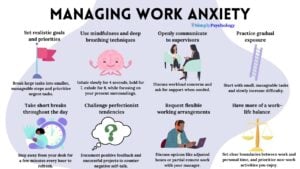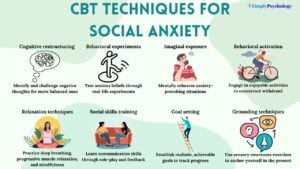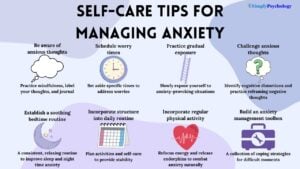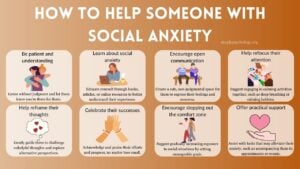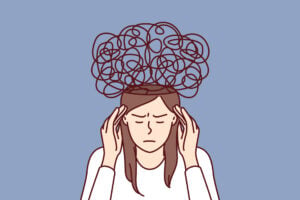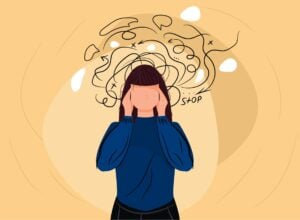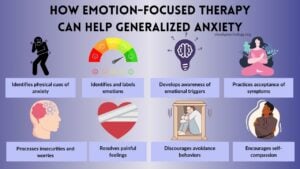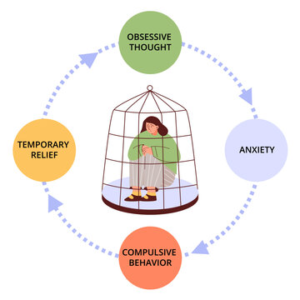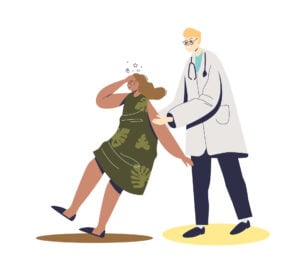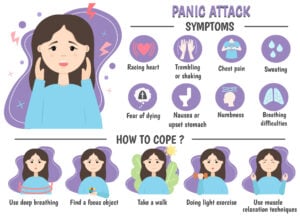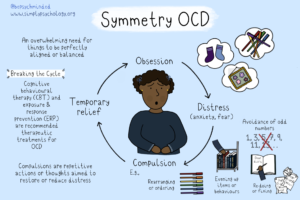Anxiety
Are worries, fears, or panic attacks making it hard to function or enjoy life? Learn about the various types of anxiety disorders and their symptoms, and what you can do to take back control and regain your peace of mind.
Key Terms
- Mood Disorder
- EMDR
- Gaslighting
- Anxiety
- Attachment Styles
- Narcissism
Mood Disorder
Mood disorders are a broad umbrella term used to include all different types of depressive and bipolar disorders. Conditions which affect mood can range from feeling extremely low to extremely high. Whilst it is normal to experience periods of different moods, mood disorders are characterised by emotional extremes and difficulties in regulating mood.
Learn More: Am I Depressed or Just Sad?
EMDR
Eye Movement Desensitization and Reprocessing (EMDR) therapy helps people to process the negative images, emotions, beliefs, and body sensations associated with traumatic memories that seem to be stuck. The therapy involves reconnecting the traumatized person to their memories in a safe and measured way.
Learn More: About EMDR Therapy
Gaslighting
Gaslighting is a form of psychological abuse whereby a person or group manipulates one or more people into questioning their sanity and perception of reality. People who gaslight use this form of emotional abuse to exert power or control over others to manipulate them.
Learn More: What is Gaslighting?
Anxiety
Anxiety is an emotion which is characterised by feelings of worry, fear, and tension. For many people, anxiety can become a mental health concern if they find that they are regularly experiencing anxious feelings, their fears or worries are out of proportion to the situation, and they find they are avoiding situations which may make them anxious.
Learn More: Why am I anxious for no reason?
Attachment Styles
An attachment style describes the way in which people relate to others, based on how secure they feel. Secure attachment is characterised by feelings of trust and safety in relationships. There appears to be continuity between early attachment styles and the quality of later adult romantic relationships.
Learn More: The Different Types of Attachment Styles
Narcissism
Narcissism is the overinflated belief that one is superior to everyone else, with excessive interest in oneself and in appearance. Narcissistic individuals have an inflated sense of self-importance and entitlement, have a strong desire for attention and admirations, and lack empathy for others.
Learn More: Covert Narcissist: Signs and How to Respond
Frequent Asked Questions
There are two primary components of OCD: obsessions and compulsions. Obsessions are unwanted and persistent thoughts, images, sensations, or urges that cause anxiety or distress.
Obsessions can be focused in one area, such as experiencing unwanted thoughts solely about religious scrupulosity (worries about blaspheming, sinning, or otherwise violating your religious doctrine).
But, more commonly, obsessions occur across several different themes, including but not limited to concerns about contamination, safety, aggression, symmetry, sexuality, identity, morality, and perfectionism.
Obsessions are intrusive and distressing, and people usually try various strategies to quell them. You might have experienced this yourself and discovered that these strategies often backfire, providing you with only temporary relief before the obsessions roar back with a slightly different nagging concern.
One common and understandable strategy is to avoid anything that provokes the obsessions. Avoidance can be physical, as in refusing to go to playgrounds when intrusive thoughts about harming a child are present.
However, avoidance can also be cognitive, emotional, or sensory, meaning that you begin to do mental gymnastics to avoid certain thoughts, feelings, and sensations that remind you of your worries. It can be downright exhausting!
You might carve out whole areas of your life to prevent obsessions, only to end up feeling drained and more defeated -especially when OCD affects your relationships or other important areas in your life.
Learn More: OCD Intrusive Thoughts
Free-floating anxiety describes feelings of discomfort, uneasiness, worry, and anxiety that can appear for seemingly no reason. This anxiety can often feel generalized or random and does not appear tied to any particular object or situation. Trying to stop anxious feelings is a form of resistance and can strengthen anxiety.
Learn More: Anxiety For No Reason

